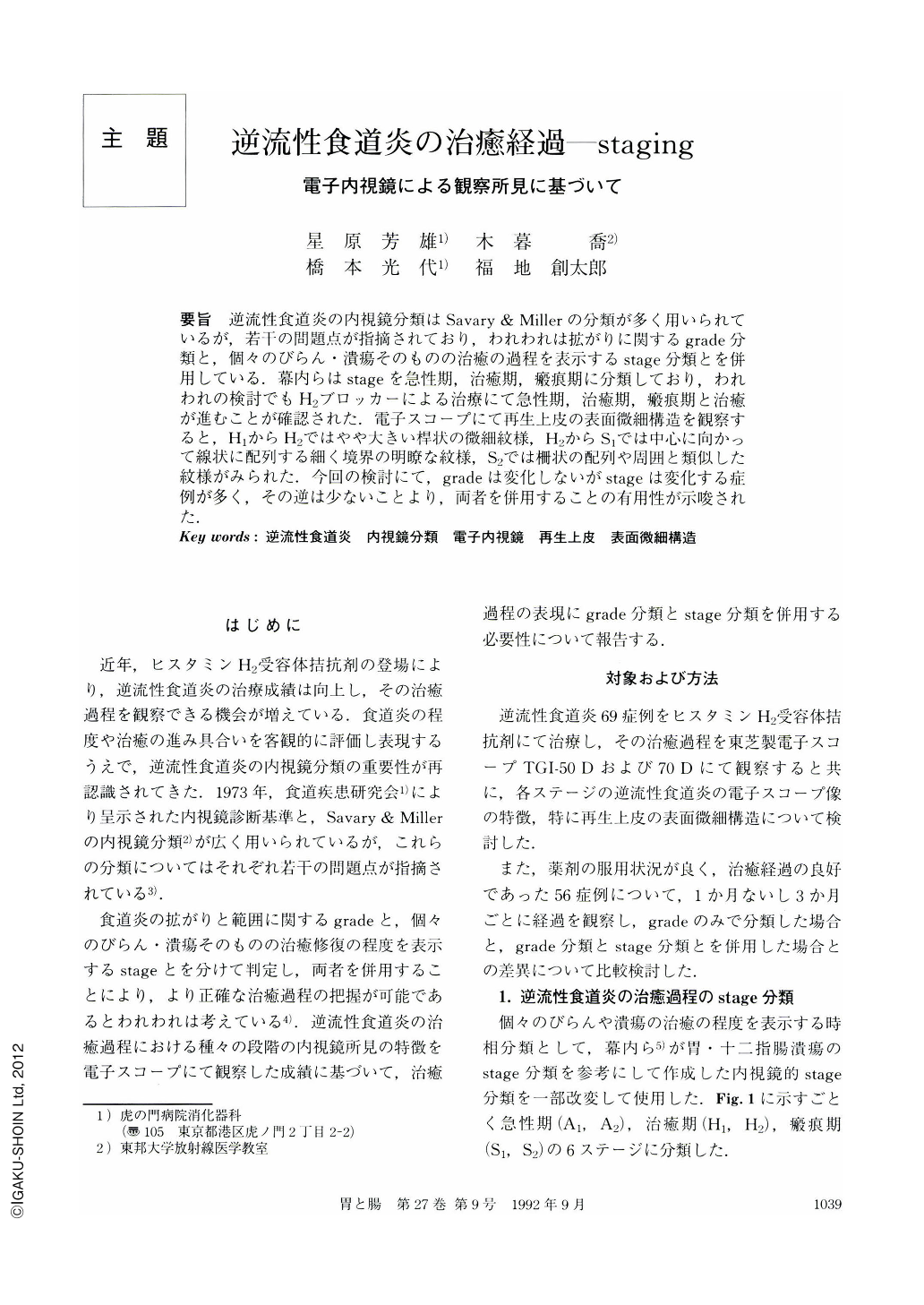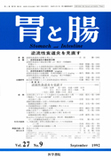Japanese
English
- 有料閲覧
- Abstract 文献概要
- 1ページ目 Look Inside
要旨 逆流性食道炎の内視鏡分類はSavary & Millerの分類が多く用いられているが,若干の問題点が指摘されており,われわれは拡がりに関するgrade分類と,個々のびらん・潰瘍そのものの治癒の過程を表示するstage分類とを併用している.幕内らはstageを急性期,治癒期,瘢痕期に分類しており,われわれの検討でもH2ブロッカーによる治療にて急性期,治癒期,瘢痕期と治癒が進むことが確認された.電子スコープにて再生上皮の表面微細構造を観察すると,H1からH2ではやや大きい桿状の微細紋様,H2からS1では中心に向かって線状に配列する細く境界の明瞭な紋様,S2では柵状の配列や周囲と類似した紋様がみられた.今回の検討にて,gradeは変化しないがstageは変化する症例が多く,その逆は少ないことより,両者を併用することの有用性が示唆された.
Savary and Miller's endoscopic classification of reflux esophagitis is the most widely used, but is challenged in some points. We have claimed that it should be classified separately by two factors; surface extent and stage. Makuuchi et al divided reflux esophagitis into six stages; acute (A1, A2), healing (H1, H2) and scarring (S1, S2), referring to the endoscopic classification for gastric ulcer. We confirmed that, by treatment with H2 blocker, reflux esophagitis improved from the acute stage to the healing stage and further to the scarring stage.
By using the electronic endoscope TGI-50 D or 70 D (TOSHIBA), we could observe spot- and rod-shaped fine patterns in the regenerated mucosa of reflux esophagitis in the H1, or early H2, stage. In the late H2 or S1 stage, these were linearly arranged and partially made straight lines. In the S2 stage some became palmside-like lines and the others were similar to the lines in the surrounding mucosa.
It is useful to use a classification based on stage in combination with one based on grade, because stage improved in many patients with the lesion in the same grade but the reverse case was rare.

Copyright © 1992, Igaku-Shoin Ltd. All rights reserved.


